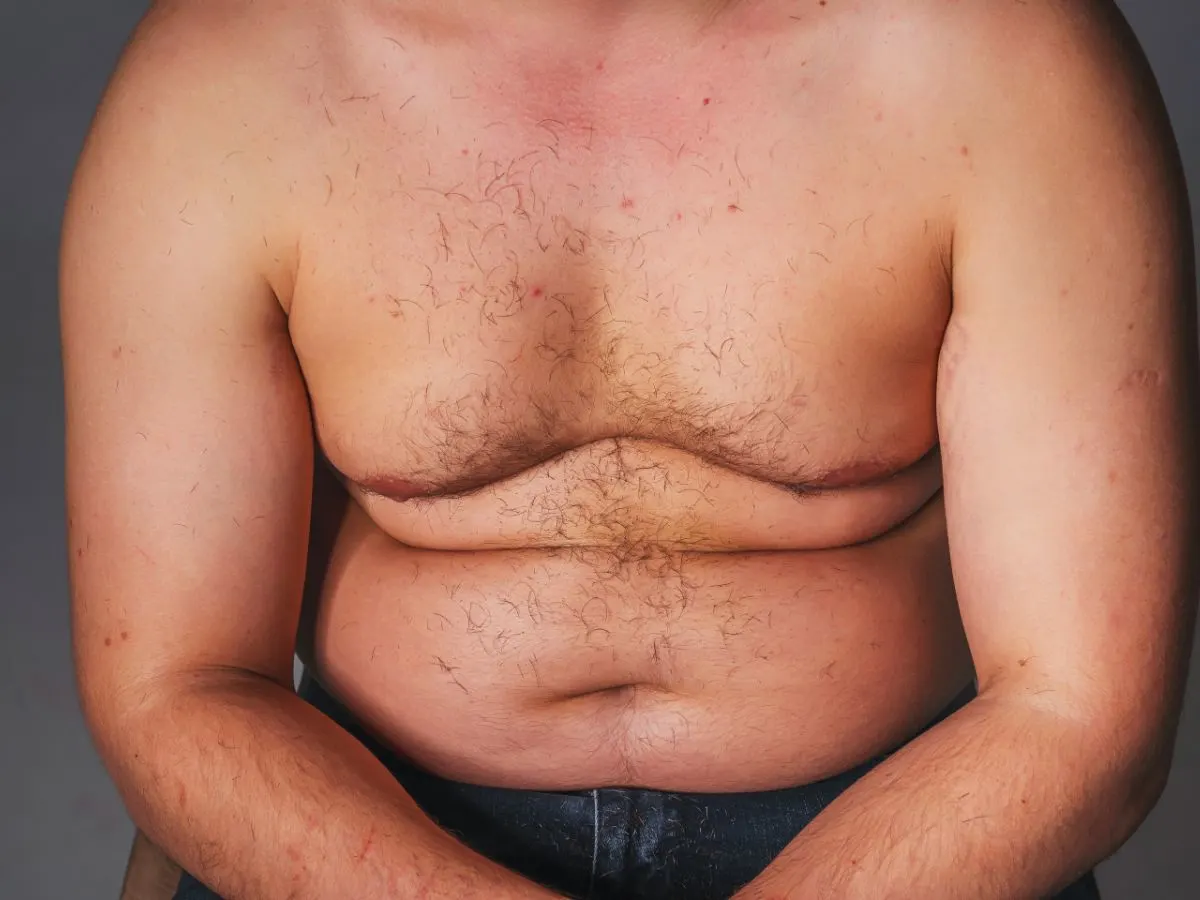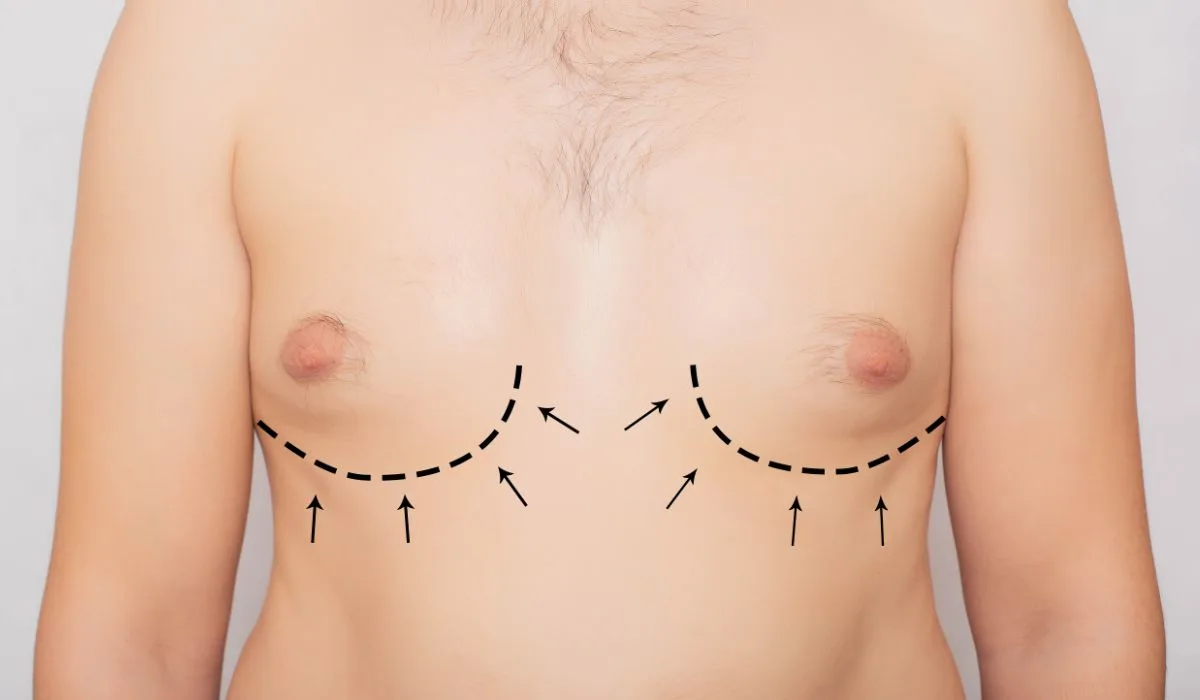Chest fat vs. gynecomastia – how to tell the difference:
Introduction
If you’re serious about making this your year and getting yourself in shape finally, you need to ensure that you’re putting in the work not only in the gym but in the kitchen as well.
You can do all of the bench presses and dumbbell curls you like, but if your diet sucks, you won’t see the gains with your physique.
Speaking of bench presses, having a muscular and full chest is a great way to round off a powerful and aesthetic physique.
The problem, however, is that building a muscular chest is easier said than done, especially if you’re prone to storing fat there.
For men, fatty deposits on the chest can cause all manner of self-esteem issues, yet they aren’t necessarily caused by weight gain.
Sometimes, a condition called gynecomastia is to blame, which is why it’s vital to know the difference.
Here’s a look at chest fat vs gynecomastia.
What is chest fat?
In terms of what chest fat is, the condition itself is fairly self-explanatory.
Chest fat is basically a term used to describe an accumulation of fat on a man’s chest.
Rather than having pectoral muscles that are big and muscular, instead, a man’s chest becomes soft and flabby because that is where he is storing excess fat.
Typically, the most common cause of chest fat in men is simply weight gain, or rather, fat gain.
When people gain weight, body fat is distributed around the body.
Most men will store most of the fat on their stomachs and midsection. Some men, however, will store an excessive amount on their chests.
If chest fat is caused by weight gain, typically you’ll find that losing body fat is the most effective way to address the issue.
A lot of men will diet and exercise to achieve this.
Performing exercises that target the chest is a great way to address chest fat and tone the muscles.
While it is impossible to turn excess chest fat into muscle, what you can do is burn the fat off and replace it with lean muscle mass instead.
What is gynecomastia?
Up next we’re going to look at gynecomastia, which is considerably more complex than chest fat.
Gynecomastia, sometimes abbreviated to ‘gyno’ or referred to as ‘man boobs,’ is a hormonal condition that causes a man to develop breast tissue similar to what is found in women.
As far as chest fat vs gynecomastia, the two differ in that gyno is caused by an accumulation of glandular breast tissue in the pectoral area on a man’s body, i.e. the chest.
Gyno can be caused by different things, from hormonal imbalances and steroid abuse to age and genetics.
Basically, with gyno, male breast tissue overdevelops, causing a man to develop an excessive amount of breast tissue.
Sometimes it can cause a man’s chest to look a little flabby in places, or for a man’s nipples to look puffy, whereas in extreme cases a man can literally develop breasts as you would find on women. Furthermore, being overweight isn’t always required.
Sometimes men who are lean and/or muscular can develop ‘man boobs.’
Did The Rock have Gyno?
One of the most famous cases of alleged gynecomastia is none other than Dwayne “The Rock” Johnson.
Fans of WWE (then WWF wrestling) will know that The Rock would wrestle in black wrestling trunks with his name and iconic ‘Brahma Bull’ logo on there, along with knee pads, boots, and elbow pads.
In late 1998 however, he switched up his attire.
Shortly after he won the WWF championship for the first time, The Rock began wrestling in a black tracksuit.
The 6ft 5, 275-pound slab of muscle kept his physique covered up when wrestling, from November 1998 to around March 1999.
Some fans speculated that he was injured, whereas others thought he may simply have been out of shape.
It turns out, however, that during this time he was suffering from gynecomastia, and subsequently had gyno surgery to rectify the issue.
If you noticed, in late 1998, despite being naturally lean and muscular, The Rock’s nipples did look a little puffy and swollen.
By the time he wrestled Stone Cold Steve Austin at Wrestlemania XV in March 1999, however, The Rock returned to the topless look when he wrestled in tights again. He also looked more muscular than ever.
The Rock himself later confirmed that he had “liposuction” on his chest, which is when he had the gyno removed.
Whether it was caused by steroids, weight gain, genetics, or anything else, however, remains to be seen.
ALSO READ: How Many Hershey Kisses in a Bag/Jar?
What causes gyno?
Gyno can be caused by any number of things, including:
Genetics
Some men are just unfortunate enough to develop gyno for no obvious reasons.
Hormonal imbalances
In the body, testosterone is the dominant male sexual hormone. In women, estrogen is the dominant hormone.
If a man produces too little testosterone and too much estrogen, it can lead to gyno.
Anabolic steroid use can also cause gyno because it can cause testosterone production in the body to shut down, while also disrupting your hormones.
Puberty
During puberty, a man’s hormones are all over the place. Sometimes this causes teenage boys to develop gynecomastia.
Weight gain
Even though chest fat vs gynecomastia are not the same things, weight gain can still cause gyno.
Too much body fat causes fat cells to produce estrogen. The more fat cells you have, the more estrogen you produce. This can lead to the development of breast tissue in men.
ALSO READ: How many Reese’s Pieces are in a bag?
Chest fat vs gynecomastia: How are they treated?
If you simply have too much chest fat, you can address the issue by losing weight.
Diet and exercise are the best ways to achieve this, though be wary of losing too much fat, too quickly, as this can cause loose skin.
Incorporating chest exercises into your exercise routine such as barbell and dumbbell bench presses, push-ups, chest flies, cable crossovers, chest presses, etc, is a great way to tone the chest.
If you have gyno, however, losing weight will not work. The only way to solve the issue is to have surgery.
ALSO READ: Can you drink chlorophyll while on birth control?
